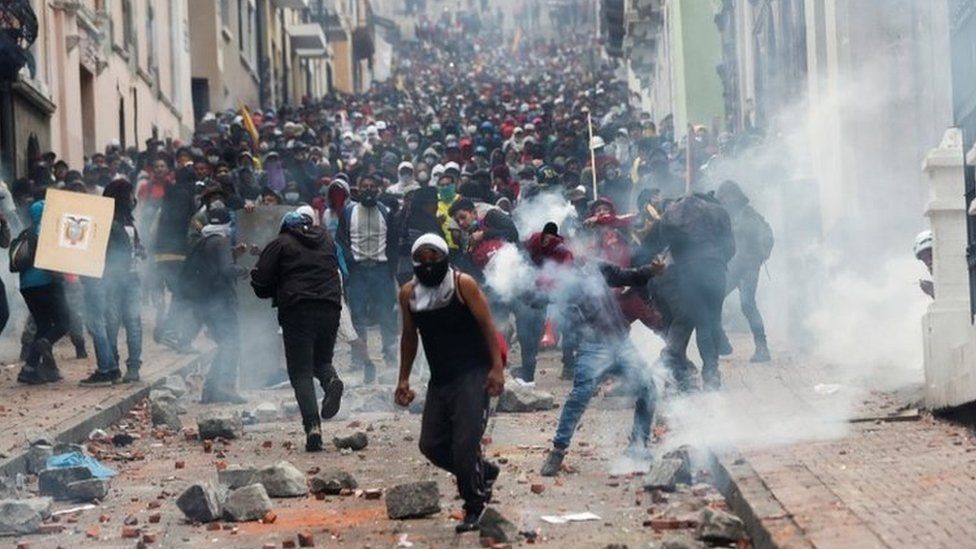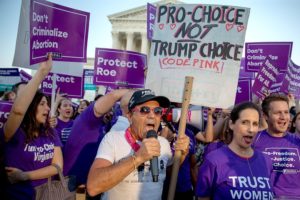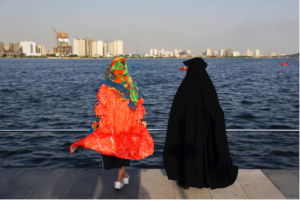
Photo courtesy of Reuters via the BBC.
In early October, Ecuador’s capital, Quito, saw several protestors take to the streets after President Lenin Moreno ended a fuel subsidy for the country’s oil production. Back in March, the government of Ecuador met with the International Monetary Fund to create a $4.2 billion financing agreement which included cutting the four-decade-long fuel subsidy. The subsidy is said to have cost the country $1.4 billion every year and was also tied in with gang operations, smuggling and corruption. As a measure to avoid the violent protests, President Moreno moved his administration from Quito to Guayaquil, a city on Ecuador’s western coastline. President Moreno has only been in office since 2017 and was looking to avoid the fate of several presidents in Ecuador’s past. In the past 27 years, only two presidents have been able to serve a full four-year term, according to the Wall Street Journal. Many of the protestors vandalized buildings, burned military vehicles and even shut down an oil production facility that produces around 10% of the country’s daily output of petroleum. The protestors were made up of public-transport officials, supporters of the previous president and indigenous groups because the subsidy caused petrol prices to rise a quarter and diesel prices to double, according to The Guardian.
One particular protesting group to be the voice of the people is Conaie. Conaie is an umbrella group for the indigenous population in Ecuador. Their president, Jamie Vargas, was the one negotiating with mediators from the United Nations and the Catholic Church to resolve the issues. They agreed on creating a separate commission that will create new economic reforms putting less of a burden on the working class. President Moreno even said, “I have no problem eliminating from the decree all that affects the poorest of our homeland.” Although the protestors were able to resolve the issue, it resulted in seven deaths and over 1,000 arrests, making it less peaceful than it could’ve been.
Due to past presidencies, it isn’t a shock that Moreno would feel pressured to quickly react by moving his administration to another city, but he can be more effective if he faces the issues head on. After the fact, everyone was able to realize that they all want what is best for the people of the country, so negotiating terms should become easier to do in the future. It also goes to show how a well organized group, like Conaie, can make a difference in their government without using violence. Negotiations were done through discussions, not throwing punches, and it should be a message to other local groups that advocating for their agenda can be done amicably.
Regina Rivera


